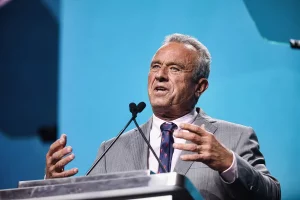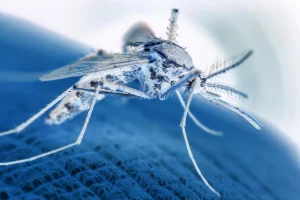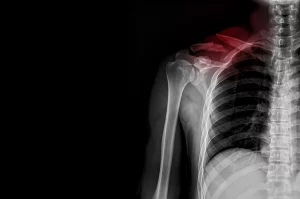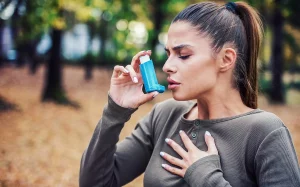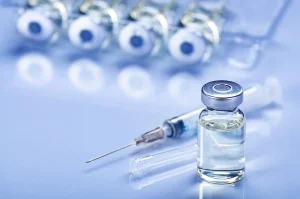Terlisa Sheppard knows the value of tracking changes in her body.
The Orlando Health patient was eight and a half months pregnant and just 31 years old when she felt a lump under her arm. She left work to get it checked out and “didn’t return back to work because that is the evening that I found out I had breast cancer,” Sheppard said.
Now, 23 years later — and long after delivering that healthy baby — Sheppard wants young women to understand the benefits of screening for breast cancer.
“I know for sure that that mammogram saved my life and my baby’s life,” Sheppard said.
Early detection of breast cancer is critical to help women avoid a late-stage diagnosis that is harder to treat. Yet a new survey finds many younger women have no plans to get a mammogram in the near future.
Researchers also found that many of these women are unaware of their individual risks for breast cancer.
The national survey by a health provider in Florida found that more than one-fifth — 22% — of women 35 to 44 had no plans to get a mammogram that could detect cancer and potentially save their lives.
“That to me is really concerning because we recommend mammograms starting at age 40 and these women are saying, ‘Nope, I don’t plan to,'” said Dr. Nikita Shah, medical oncology team leader for the Breast Cancer Center at the Orlando Health Care Institute. The survey of more than 1,100 adult women was conducted online Sept. 8-12.
Breast cancer specialists at Orlando Health aren’t sure why women might feel this way. But Shah believes it’s a combination of lack of awareness, concerns about the cost of a mammogram and worries that the screening procedure will hurt.
While cost can be a factor for some, most private insurers cover screening mammograms under the Affordable Care Act. Also, during October, which is Breast Cancer Awareness Month, many organizations offer them for free or at a low cost, such as $20 to $30, Shah said.
“The other thing I hear is the compression hurts and, yes, it does hurt, it’s a little uncomfortable, but it literally lasts for a few minutes and then it goes away,” Shah said. “Don’t let that be a reason why you don’t do a mammogram, which can save your life.”
Women of average risk of breast cancer can get a mammogram annually beginning at age 40, according to guidelines. Those who have a family history of breast cancer should start earlier as should those with prior biopsies, atypical cells and dense breast tissue.
While 22% of women ages 35 to 44 have never had a mammogram and have no plans to get one, only about 43% of women knew their family history, the survey found.
“We kind of just assume that people know, but sometimes patients don’t have good relationships with family members or they don’t know or they don’t ask or people may not talk about it,” Shah said. “Knowing family history is important.”
About 42,000 women in the United States die of breast cancer each year, according to the U.S. Centers for Disease Control and Prevention, but survival is over 90% if the tumor is caught early. Mammograms can spot tiny tumors, making it more likely to catch the disease at an earlier stage.
Orlando Health recommends women talk with their primary care physician or gynecologist beginning in their 20s to help assess their risks. The health organization also recommends monthly self-exams to feel for any changes.
The risks for women are not uniform, and Black women are 40% more likely to die from breast cancer compared to whites. This may be in part because Black women often are diagnosed with a more aggressive type of cancer. Social biases may also play a role, Shah said, including possibly delays in initial diagnosis and in treatment.
Susan Brown, senior director of health information and publications at cancer resource organization Susan G. Komen, said the reasons for disparities in outcomes by race aren’t fully known.
“We think it may be related to the biology of breast cancer. Black women are more likely to have an aggressive form of breast cancer,” Brown said. “They’re also more likely to be diagnosed at a younger age. Then there are also questions about the quality of health care that Black women receive.”
Brown expressed disappointment at the survey results, but not surprise.
“That tells me that we have more work to do to provide some education so that women understand that finding breast cancer early and getting effective treatment if it is diagnosed has been shown to save lives,” she said. “We’ve had mortality decrease because of early detection and effective treatment from 1989 to 2019.”
Mammograms are a widely available tool, Brown said. “I think we have an opportunity to try to just reinforce that message that mammograms today are the best tool we have for finding breast cancer early,” she said.
When cancer is found early and confined to the breast, the five-year relative survival rate is about 99%, Brown said.
However, “if it’s found later, obviously the treatments are more difficult, the side effects are more difficult, the costs are greater and the outcomes are poorer,” Brown said.
Shah pointed out that about 1% of breast cancers happen in men, and so they should also be familiar with what’s normal in their bodies.
“If they feel a lump or nipple discharge, don’t ignore it. That’s not normal,” Shah said. “They need to also have it looked at if they feel something.”
More information
The U.S. Centers for Disease Control and Prevention has more on breast cancer.
SOURCES: Nikita Shah, MD, medical oncology team leader, Breast Cancer Center, Orlando Health Care Institute, Florida; Susan Brown, MS, RN, senior director, health information and publications, Susan G. Komen, Dallas, Texas; Terlisa Sheppard, Orlando Health patient; Orlando Health survey, Sept. 8-12, 2022
Source: HealthDay
Copyright © 2025 HealthDay. All rights reserved.











